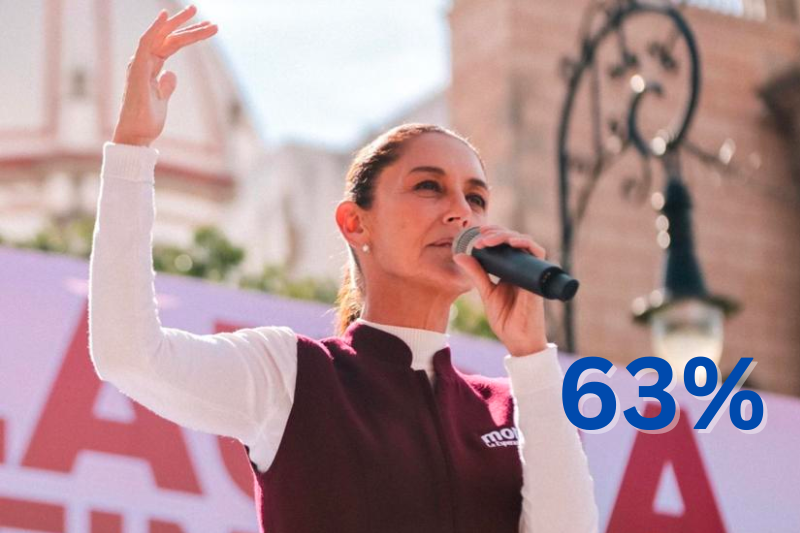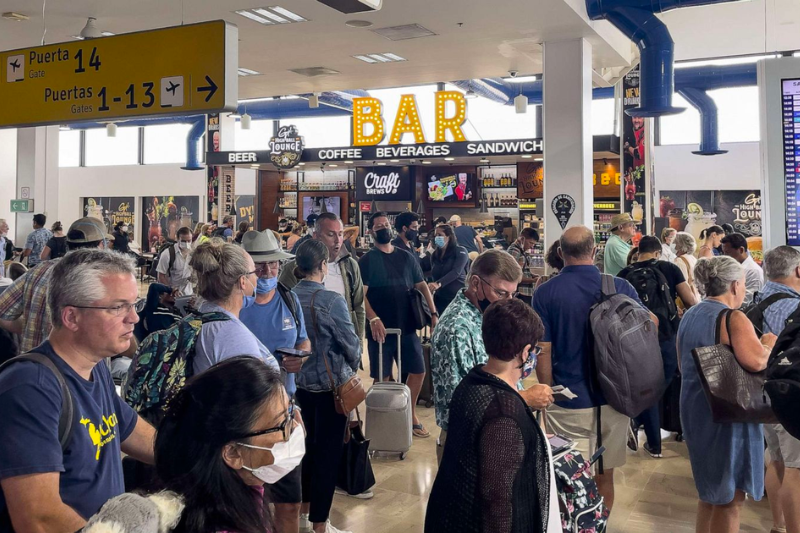Earthquakes in Mexico City: A Complete Guide

Earthquakes in Mexico City have been described as some of the most powerful in the history of seismology.
Each of the earthquakes in Mexico City has been studied to determine its impact, while others have simply left behind death and sorrow.
In this sense, the study of earthquakes in Mexico City is closely intertwined with myth and legend.
In fact, a very ominous date for Mexicans is September 19, a day on which, in different years, the city has fallen victim to devastating earthquakes.
However, the issue of earthquakes in Mexico City is not something unique to the 21st or 20th century, nor is it a harbinger of the end of the world.
It is estimated that seismic activity has been constant for many centuries, with peaks and troughs.
Over the years, various earthquakes have shaken Mexico City, and although there are long periods of calm, the city has experienced a wide range of epicenters.
Generally, the seismic activity in the Basin of Mexico and its surroundings is infrequent and of low magnitude. Despite this, several earthquakes of considerable magnitude are recorded each year.

Origin of Earthquakes in Mexico City
Regarding the origin of earthquakes in Mexico City, it is thought that they are generated by the reactivation of ancient faults.
Others believe that these events may occur as a result of the accumulation of regional stress or that the subsidence of the Valley of Mexico could create tensions that, although not directly generating earthquakes, could trigger them.
There is also the hypothesis that large earthquakes generated on the coast could lead to conditions of imbalance and trigger local earthquakes.
Mexico City is one of the 32 states in Mexico where earthquakes are most common, as it is located in a seismic zone.
READ HERE: Reduction of the price of 10 drugs for the elderly in the United States.
As previously mentioned, it lies above faults, and there are areas where surface tensions have been accumulating for several decades or even centuries.
Earthquakes in Mexico City in Recent Decades: With an Epicenter in the Capital
In the metropolitan area of Mexico City, the most sensitive areas are the municipalities of Tláhuac, Xochimilco, Iztapalapa, Cuauhtémoc, and Gustavo A. Madero; this is due to the overexploitation of aquifers.
According to researchers, the absence of water causes the subsoil to collapse, leading to small movements as it sinks, according to data from SkyAlert.
The National Seismological Service (SSN) reported that, according to the earthquake catalog, 359 earthquakes with epicenters in Mexico City have been recorded since 1974. The strongest one, with a magnitude of 4.0, occurred on November 15, 2003, with an epicenter 5 km southeast of San Antonio Tecomitl, CDMX.
The seismological service explained that it is unlikely for earthquakes with a magnitude greater than 4 to occur, as the magnitude is limited by the size of the fractured area.
However, due to the high population density and the shallow depth of the earthquakes, they can pose a risk to the inhabitants of Mexico City.
But the fact that there are few earthquakes with an epicenter in Mexico City does not mean that some earthquakes have not affected the city.
If you want to learn more about Mexico and other interesting facts, you can click here.
Earthquakes in Mexico City: September 19, 1985
At 7:19 am on September 19, 1985, an earthquake originating from the subduction zone on the Pacific coast, about 300 km southwest of the metropolis, changed the fate of thousands of people.
The 7.4 magnitude earthquake took less than a minute to travel across the surface of southern Mexico before reaching beneath the city.
Amplified by soft soils, it reached a magnitude of 8.1, killing around 10,000 people according to government data, and immediately causing the collapse of 400 buildings, with an additional 3,000 being demolished.
It is estimated that 700,000 of the approximately 9.1 million inhabitants of the Federal District of Mexico City were left homeless.
Thus began the curse of September 19, a dark date in the recent history of Mexicans.
For this reason, earthquakes in Mexico City are associated with crisis, disaster, and significant incompetence in the face of natural catastrophes.
Therefore, every year since 1985, a minute of silence is observed on September 19, followed by commemorative events, and the inauguration of monuments and memorials.

Earthquakes in Mexico City: September 19, 2017
On September 19, 2017, earthquake alarms were heard in Mexico City, and they sounded twice: the first time as part of a drill, the second time for real.
Incredibly, many of the evacuations involved people participating in commemorative events. This 7.1 magnitude earthquake killed more than 300 people and destroyed dozens of buildings.
A survey conducted in 2020 by the newspaper El Financiero showed that the residents of Mexico City had a particular fear of earthquakes.
Therefore, earthquakes in Mexico City are no small matter; they are a reality that its citizens live with in constant fear.
On September 19, 2019, I stood alongside support groups for earthquake victims in Mexico City as we waited for the commemorative evacuation drill.
When the alert began to sound, many around me covered their ears to muffle the robotic voice softly repeating “Seismic alert” over the ghostly, throbbing tone of the alarm.
As if the early warning alert itself were somehow the cause of the earthquakes, a woman quietly said, “Let the earth stay calm today,” and we murmured our agreement until the alert drowned us out.
Another One, September 19, 2022
An earthquake, with a magnitude of 7.7, was felt in 12 states on September 19, 2022. The magnitude wasn’t as striking, but its duration was: three minutes.
It damaged buildings and killed two people. It was relatively minor compared to the earthquakes of 1985 and 2017, but when the city shook for the third time, the temporality of trauma shifted: the fears and anxieties that might have seemed like the result of past disasters could no longer be considered “post-traumatic” because the “post” had not yet begun.
Earthquakes in Mexico: The Most Devastating
Among the recorded earthquakes in Mexico, the one in 1985 had the greatest impact, as well as those in 2017 and 2019, which left more than 470 dead.
Here are the 10 strongest earthquakes that have occurred in Mexico:
- The 1999 Puerto Escondido earthquake
- The 1912 Acambay earthquake
- The 1995 Colima earthquake and tsunami
- The 1957 Ángel earthquake
- The 1928 Acatlán de Osorio, Puebla earthquake
- The 1841 Punta Santa Elena earthquake
- The 1932 Barra de Navidad earthquake
- The 2017 Tehuantepec earthquake
- The 1973 Orizaba earthquake
- The 1787 San Sixto earthquake
About the National Seismological Service: SSN
The National Seismological Service (SSN) is the organization responsible for the detection and monitoring of earthquakes in Mexico.
The SSN has a network of more than 100 seismological stations, which can detect earthquakes with magnitudes as low as 3.5. It also has an earthquake early warning system, which alerts the population about the occurrence of an earthquake with a magnitude greater than 7.0.
This system sends alerts via radio, television, and mobile phones.






